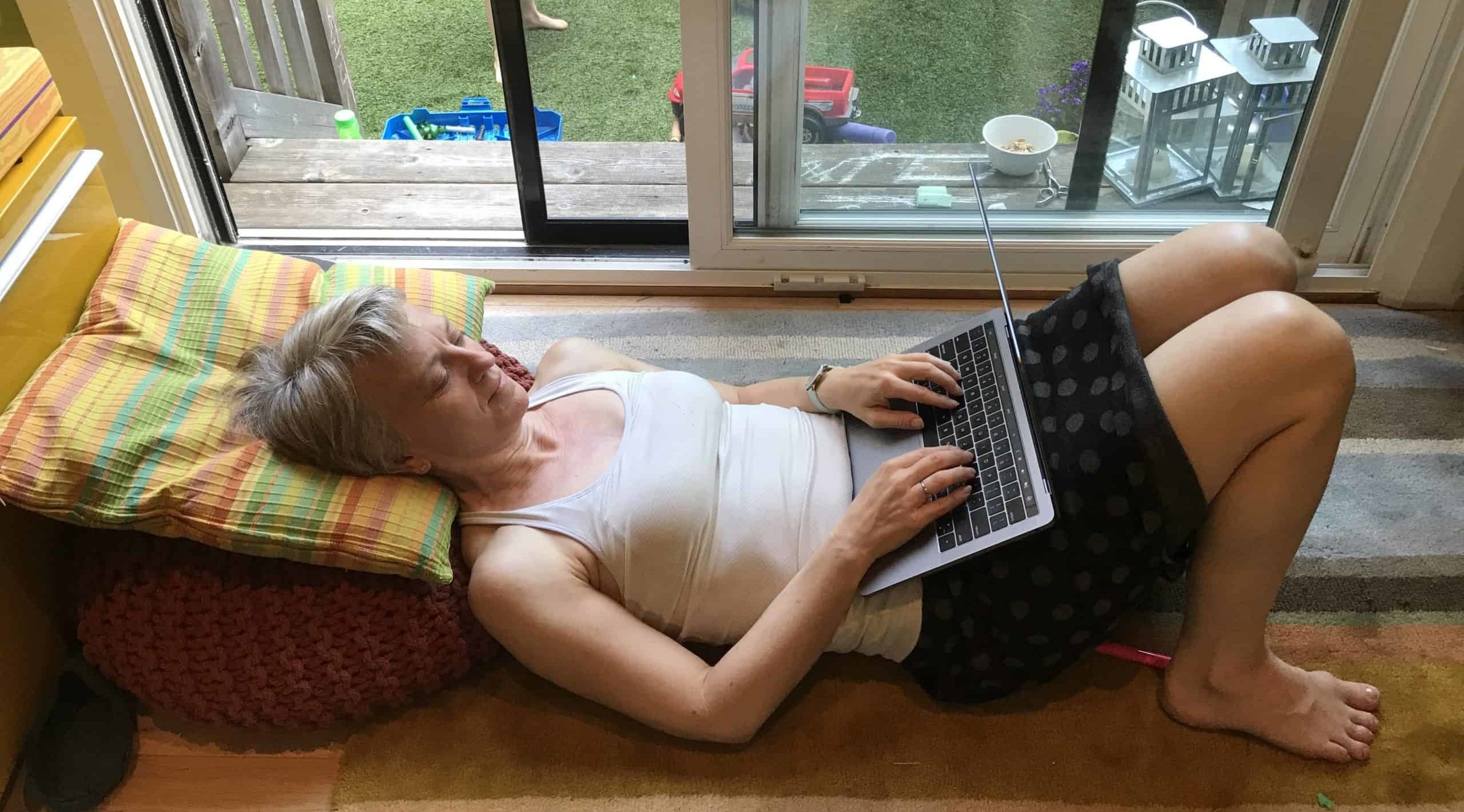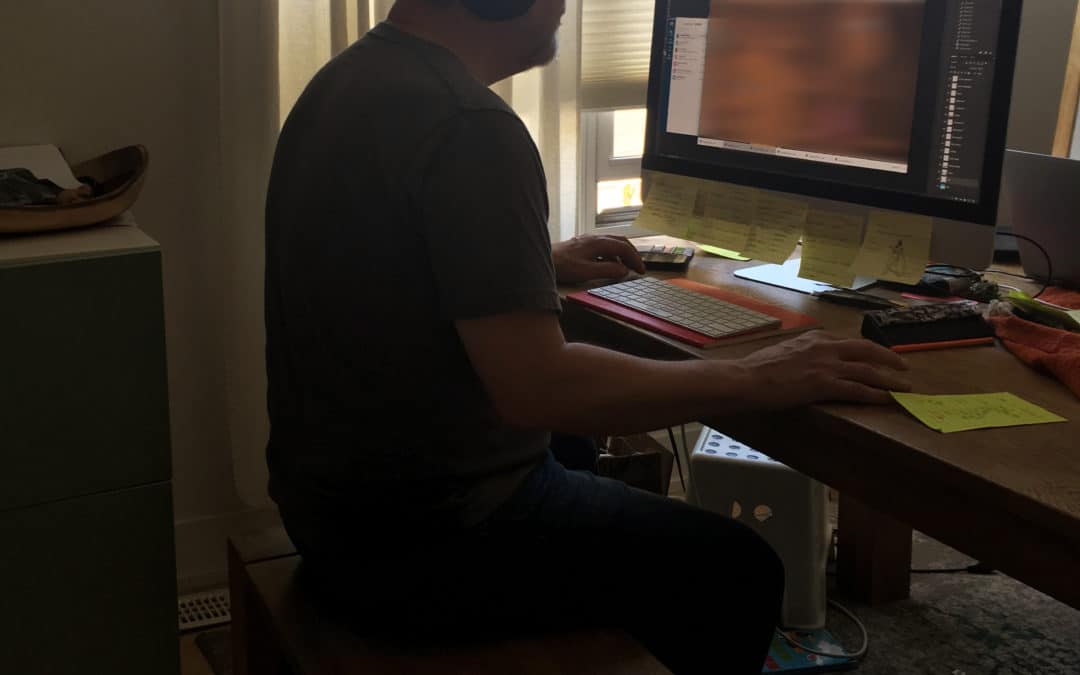Hips at 90°.
Chin level to the floor. Elbows open and supported. The spine neutral, supported by a gentle lumbar support.
Perfect.
Now stay there for hours.
There are two major problems.
1. We don’t stay there. No matter how great the chair is.
2. The body doesn’t want to stay in one position.
As I frequently do, I will use my husband Don as an example. I’ve seen Don work in a very good ergonomic chair and sit horribly in it. By hour 5 the pelvis has slid forward and the back has rounded, sinking towards the back of the chair. The body goes where the fascia goes. The position of ease.
With the transfer of Don’s work station to our home, (combined with the problem of no child care), Don set up his office at our kitchen table instead of the basement. Due to a small space and general mayhem, he didn’t move his office chair upstairs, so sat on our wooden bench instead.
I had the opportunity to watch the posture in action, over weeks and there’s been some interesting observations.
- There was lots of underlying fidgeting and shifting that was very pronounced the first few days.
- When the opportunity appears (downloading, uploading or other brief moments), there is an instinct to stretch or stand, even for 10 seconds.
- When the work hours extended to the category of hideously long (rather than just awful), he would take the trouble to shift the computer around and move into a regular kitchen chair for the final stretch.
- Don’s posture after a long day of work was significantly better than it would be in his basement office chair. No post work slump. No discomfort.
To be clear, I’m in no way recommending this approach to everyone. If you’ve read my blog on transitioning to bare foot shoes, you’ll notice we tend to go for extreme changes in this household.
And for full disclosure I should add in that in these 10 hour spans, Don uses our son’s skipping rope for 3 minutes of intense cardio a few times per day as well as my 5 min desk workout on occasion. These are very small interludes but have a positive effective on circulation and fascia.
How could he stand and feel better with so little support?
My guess is that the postural muscles (particularly the mid back spinal extensors) have to stay active and the chest doesn’t compress making both the spine, breath, and fascia happier. Along with that there is small, though frequent movement.This might not seem significant, but if you are a hamstring being squished on a chair, or rigid low back tissue, this is good news.
The body wants to move. The argument for living without chairs and couches (yes, there is an argument for that) is that we will sit on the floor in varied positions and our bodies will cue us to move into other positions regularly. We will shift and adjust and won’t remain static.
Don’t throw away ergonomics.
So yes, seek out the chair that works for you.
Low back fatigue? Get a chair with low back support so that you don’t sink into your lumbar spine. Or use a rolled up towel behind your low back.
Suffer from neck strain? Adjust your computer so that you’re not shearing your neck forward. Get arm rests to support your elbows.
But switch it up. Standing desks can be great if that’s possible. But so is sitting on a Theraball for 20 mins every few hours, sitting crossed legged or putting one foot up on a desk. Maybe office attire and formality don’t allow such postures, but it can be a perk from working at home. Our hips and fascia need to move.
As for myself, working on a laptop is much easier. I can lie down on the floor, sit on the outside steps, and stand at the counter. And I don’t have the same demands. I do have to get to the studio for all those online mat classes after all.

Lounging in one of my varied work stations.
If you want personal guidance on improving your work station or creating a 3 minute movement interlude specific to your needs send me an email and I’ll try to help. Or we can schedule a private session and work on it there.
Laura
Laura Helsel Gauthier
Pilates Process Director
Franklin Method® Educator
Teacher, Presenter, Author

